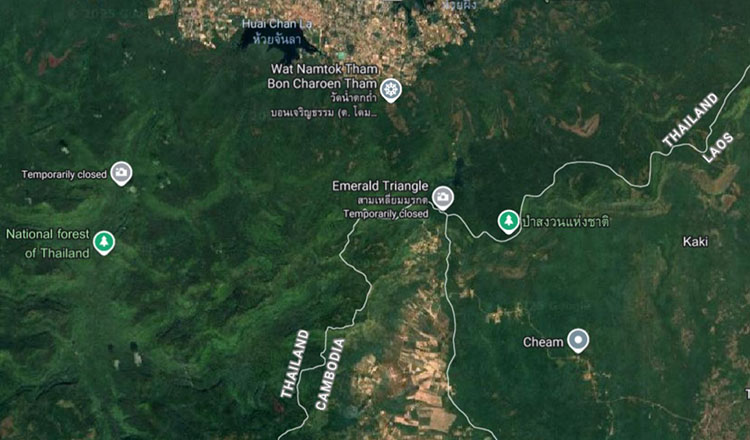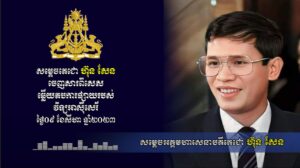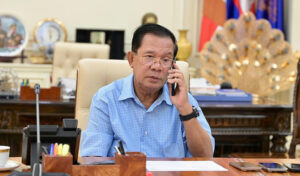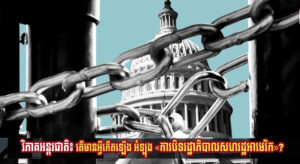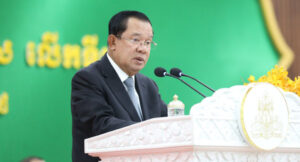Opinion: A glimpse into the future of Cambodia-Thailand ties amid border tensions
Khmer Times | The Cambodia-Thailand border dispute remains one of the most enduring and emotive issues in Southeast Asia. While notable progress has been made since the deadly clashes near the Preah Vihear Temple in the early 2010s, periodic tensions continue to flare, driven by unresolved border demarcation, nationalist sentiment, and domestic political calculations. A stark reminder of this came on May 28, when a border clash erupted in the Mom Bei area, resulting in the tragic death of a Cambodian soldier, an incident that reignited public outrage and underscored the fragility of peace along the frontier, and which led to a land border closure. As both countries navigate significant political transitions, Thailand, under Prime Minister Paetongtarn Shinawatra and the Pheu Thai Party, and Cambodia, under a post-Hun Sen leadership, the trajectory of their bilateral relations hinges on several critical factors: internal political stability, ASEAN mechanisms, economic interdependence, rising nationalism, and the broader dynamics of regional geopolitics.
I. Current state of affairs
Although Cambodia and Thailand officially maintain peaceful and productive relations, their border remains only partially demarcated. The most sensitive areas include zones adjacent to the Preah Vihear, Ta Moan and Ta Krabei Temples, and segments where natural landmarks, such as rivers, have shifted over time. The 1962 International Court of Justice ruling awarded Preah Vihear Temple to Cambodia, but did not clearly define the surrounding 4.6-square-kilometre area. In 2013, a clarification by the ICJ further strengthened Cambodia’s claims. Yet, in practice, military posts, local patrols, and periodic rhetoric on both sides maintain a latent potential for flare-ups.
On the Thai side, the border dispute is a politically sensitive issue often influenced by domestic politics. Thai political parties, especially those associated with the royalist-military establishment, have historically leveraged nationalist sentiments around border disputes for political gain. On the Cambodian side under Prime Minister Hun Manet, despite improved bilateral mechanisms, any perceived threat to territorial integrity continues to galvanise public sentiment and elite unity.
II. Political landscape in Thailand and Cambodia
Thailand’s political direction under Paetongtarn marks both continuity and uncertainty. The Pheu Thai Party retains a legacy of populism and pragmatic diplomacy. However, Paetongtarn governs in coalition with pro-military and conservative forces, limiting her ability to take bold steps on sensitive nationalist issues. This could constrain border negotiations with Cambodia.
Moreover, Thai political volatility, frequent cabinet reshuffles, or public protests may lead to a reversion to hardline stances, particularly if right-wing actors regain strength.
Meanwhile, in Cambodia, Prime Minister Hun Manet faces the dual task of upholding his father Hun Sen’s legacy while crafting his own leadership style. With a youthful cabinet and promises of reform, Cambodia is increasingly looking to establish itself as a responsible regional actor. Nonetheless, the Cambodian People’s Party still governs through centralised control, and border disputes could be used to consolidate public support if regional tensions escalate.
III. Prospects for future relations: cooperation or confrontation?
– Economic interdependence as a stabiliser
Cambodia and Thailand share growing economic interdependence. With Thailand as a leading investor and trade partner, bilateral trade surpassed $9 billion in 2024. Both nations focus on connectivity projects under ACMECS and aim to deepen cooperation in logistics, special economic zones, and cross-border labor mobility. Over one million Cambodian migrant workers in Thailand play a key diplomatic role. However, recent unpredictable Thai border closures have caused instability, leading Prime Minister Hun Manet to demand a return to the stable pre–June 7 situation. Prioritising economic ties and stable border management could significantly reduce the risk of major conflict.
– The border committee mechanism and technical challenges
The Joint Boundary Commission (JBC) remains the key mechanism for resolving Cambodia-Thailand border issues, but its progress has often been disrupted by political instability in Thailand.
A lasting breakthrough will require both governments to shield the JBC from political interference and empower experts to carry out demarcation using historical data such as MoU 2000 and Siam-Franco 1904-1907 treaty and modern technology. In the next decade, tools like drone mapping and AI-powered cartography could reduce uncertainties, especially if supported through ASEAN, the UN, or EU. This would represent a shift from emotional disputes to evidence-based resolution. Meanwhile, Cambodia plans to submit the issue to the International Court of Justice (ICJ) to seek a final and peaceful settlement.
– Risks of nationalist backlash and information warfare
Despite some positive progress, Cambodia-Thailand border tensions remain at risk of being reignited by nationalism and disinformation, especially through social media. Even minor incidents can be exaggerated online, fueling public outrage. In Thailand, media is often used to stir nationalist sentiment and support for the military, while Cambodia promotes fair and transparent reporting. This imbalance undermines trust and complicates efforts for a peaceful resolution, highlighting the need for joint media monitoring and clear communication mechanisms.
– External actors and ASEAN’s role
A future scenario where great power competition extends into Cambodia-Thailand border regions through infrastructure projects, military presence, or intelligence activities, could further erode bilateral trust. During the recent ASEAN meeting in Malaysia, Chinese Minister Wang Yi offered to assist in resolving the Cambodia-Thailand border dispute, highlighting the growing influence of external powers in the region. In this context, ASEAN must strengthen its role as mediator and technical facilitator. A revamped ASEAN Border Management Framework could provide legal, diplomatic, and capacity-building support for disputed territories throughout Southeast Asia. As the 2025 ASEAN Chair, Malaysia has a crucial opportunity to lead this initiative, not only to ease Cambodia-Thailand tensions but also to prevent wider regional conflicts involving Myanmar and the South China Sea.
IV. Three possible futures
A demarcated peace by 2035 (optimistic scenario): In this scenario, both countries complete border demarcation by 2030 through sustained JBC efforts, supported by ASEAN and the United Nations. Economic zones thrive, and bilateral tourism flourishes. Preah Vihear becomes a symbol of peace rather than division. Youth diplomacy, trade, and digital cooperation deepen societal trust.
Managed ambiguity and pragmatic coexistence (status quo scenario): Here, unresolved issues remain, but both countries manage tensions through economic cooperation and periodic dialogues.
Border incidents may occur, but they are contained diplomatically. Trade and labor flows continue to expand, and both governments avoid militarisation of disputes.
Nationalist surge and strategic polarisation (pessimistic scenario): In this scenario, internal political crises in either country fuel nationalist rhetoric. Border incidents escalate into armed clashes. Regional powers take sides, and ASEAN mechanisms fail to intervene effectively. Trade slows, investment dries up, and public trust erodes.
V. Conclusion
The Cambodia–Thailand border dispute, while currently subdued, continues to serve as a litmus test for genuine diplomacy, political maturity, and regional cooperation. However, the prospect of transforming historical conflict into lasting co-prosperity remains unlikely unless Thai politics undergoes a peaceful resolution. This vision is only attainable if future Thai leadership embraces a more balanced and respectful stance toward Cambodia, demonstrating full commitment to resolving border disputes through peaceful means and adherence to international mechanisms such as the ICJ. Without such a shift, diplomatic efforts risk being undermined by political manipulation, nationalist rhetoric, and unresolved grievances, turning what could be a bridge for cooperation into yet another flashpoint for regional instability.
The author is a researcher and geopolitical analyst. The views expressed here are his own.

